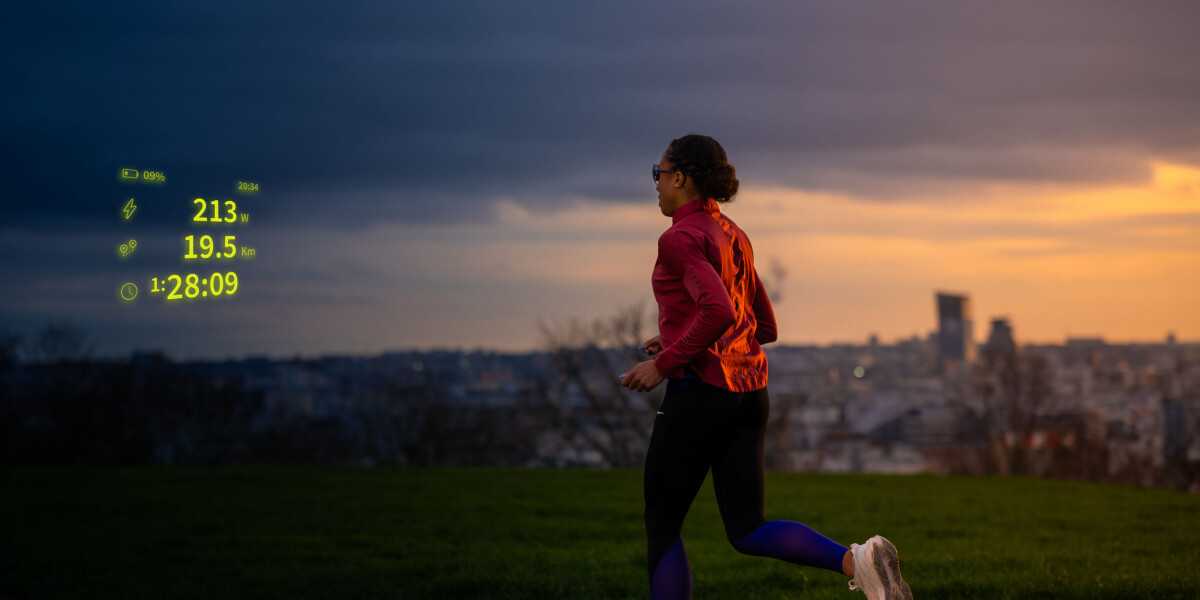
🏃♂️🚴♀️ revolutionise your run or ride with engo's smart glasses! 🕶️
- Select a language for the TTS:
- UK English Female
- UK English Male
- US English Female
- US English Male
- Australian Female
- Australian Male
- Language selected: (auto detect) - EN
Play all audios:

ENGO'S REVOLUTIONARY DISPLAY TECHNOLOGY OFFERS REAL-TIME DATA IN FRONT OF YOU TO TRACK PERFORMANCE Wearable “smart glasses” hit headlines with the launch of Google Glass in 2014 – and
again, for more embarrassing reasons, when they were swiftly pulled from the market a year later over price, safety and privacy concerns. Now, however, a French company has invented a pair
of connected glasses for runners and cyclists that are starting to sell like hot cakes. Sold under the brand Engo, the glasses connect to smart watches using Bluetooth to show information to
the wearer using a head-up display. “Most people use them for their basic distance and speed readouts, and for pacing alerts,” said Marc Vernet, the head of Engo brand for the
Grenoble-based company Microoled, which designed the technology to make the displays possible. “But we also find that some high-level athletes use them to show detailed performance figures
from training sessions. “All the information is available in the smartwatch or the bike computer, but having it in front of your eyes makes it much easier to use.” Read more: PHOTOS: See
ideas from Paris' 123rd annual inventors’ contest COMMUNICATION ISSUE There has been some confusion over whether electronic pacing devices are allowed in athletics. In 2019, the World
Athletic Federation said they could be used for speed and distance calculations and pace alerts, as well as for heart monitoring, but they must not be used to communicate with people off the
track. Coaches now have a special area near the track where they are allowed to shout out times and other information to their athletes. Professional cyclists now all have computers on
their bikes giving speed, distance, energy and map information, but wireless earphone connections with coaches are banned in some races including the Tour de France. SHARP DESIGN Mr Vernet
said the breakthrough with Engo glasses is because Microoled’s design gives very sharp images. The company has also focused on making useful and fashionable glasses that people want to wear.
Read more: Visually impaired fans get hi-tech goggles to watch sports in France The glasses come with two lens sizes and the choice of standard or photochromic lenses, which adjust to the
level of light. Some shortsighted people might need contact lenses to read the display as it is tailored to people who can read text from 1m to 10m away The glasses weigh 36g for standard
sized lenses or 41g for larger ones, making them, the firm claims, the lightest connected glasses ever sold. Prices are €300 for normal sunglasses lenses or €350 for photochromic ones. They
run on both Android and Apple systems. HIGH-TECH BINOCULARS Unistellar, the Marseille company which developed a digital telescope, previously featured in The Connexion, has now launched a
range of digital binoculars. The 10x magnification binoculars allow information, such as maps, to be overlaid on the image. So, for example, the location of water springs or the trace of a
path can be easily seen. Read more: Insoles with reversible aircon is latest from French serial inventor A compass can also be shown, and linked with other data to give precise angle and
distance information. Alternatively they can be used to look at the night sky, with astronomy information, such as the names of constellations, displayed in the field of vision. The
binoculars are being launched through a Kickstarter campaign with the first 1,000 priced at $599, as opposed to a normal price of $1,199.
